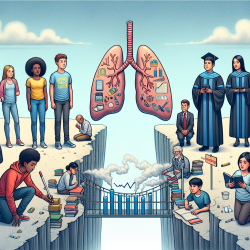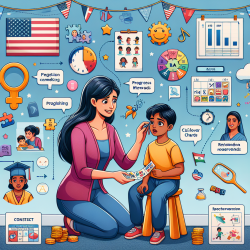Introduction
As a practitioner in the field of pediatric oncology, understanding the multifaceted aspects of patient care is crucial. The recent research article titled "Health-Related Quality of Life and Survival Outcomes of Pediatric Patients With Nonmetastatic Osteosarcoma Treated in Countries With Different Resources" offers valuable insights into the quality of life and survival outcomes of pediatric osteosarcoma patients. This study compares the health-related quality of life (HRQOL) and survival outcomes of patients in the United States and Chile, providing a unique perspective on the impact of resources on treatment.
Key Findings
The study revealed significant differences in HRQOL outcomes between the two countries, yet similar survival outcomes. Here are some key findings:
- U.S. patients reported better scores in physical, emotional, and school functioning compared to Chilean patients.
- Chilean patients experienced more worry and nausea, but these symptoms improved over time.
- Despite differences in HRQOL, neither HRQOL measures nor treatment site were associated with event-free survival (EFS) or overall survival (OS).
Implications for Practitioners
Understanding these findings can help practitioners improve patient care by focusing on the following areas:
- Enhancing Supportive Care: Implement comprehensive supportive care programs that address emotional and physical needs, which can improve HRQOL outcomes.
- Cross-Cultural Considerations: Be aware of cultural differences that may affect patient and family perceptions of care and quality of life.
- Resource Allocation: Advocate for equitable resource distribution to ensure all patients receive optimal care regardless of geographic location.
Encouraging Further Research
This study highlights the need for further research into the prognostic significance of HRQOL in pediatric cancer populations. Practitioners are encouraged to participate in or support studies that explore:
- The impact of HRQOL on long-term survival outcomes.
- The effectiveness of interventions designed to improve HRQOL in resource-limited settings.
- The role of HRQOL as a predictive measure in high-risk pediatric cancer cases.
Conclusion
By understanding and implementing the outcomes of this research, practitioners can enhance their skills and improve the care provided to pediatric osteosarcoma patients. The study underscores the importance of international collaboration and resource allocation in achieving equitable health outcomes.
To read the original research paper, please follow this link: Health-Related Quality of Life and Survival Outcomes of Pediatric Patients With Nonmetastatic Osteosarcoma Treated in Countries With Different Resources.










